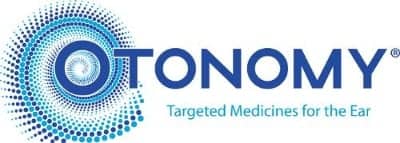Otonomy, Inc (NASDAQ: OTIC), a biopharmaceutical company dedicated to the development of innovative therapeutics for otology, announced that it is presenting data on the therapeutic potential of OTO-413, an otic sustained-exposure formulation of brain-derived neurotrophic factor (BDNF). These preclinical data, demonstrating the potential of intratympanic BDNF to repair cochlear synaptopathy—an underlying cause of hearing loss including speech-in-noise hearing difficulty—are being presented as part of the Society for Neuroscience (SfN) Annual Meeting in San Diego, November 3-7, 2018.
“The selection of our OTO-413 presentation as a ‘Neuroscience 2018 Hot Topic’ acknowledges the increasing interest in better understanding the neuroscience of the inner ear and the importance of Otonomy’s work to address the significant unmet needs of people living with hearing loss as well as other burdensome otologic conditions, such as Ménière’s disease and tinnitus,” said Kathie Bishop, PhD, chief scientific officer of Otonomy. “These data, showing that OTO-413 improves measures of cochlear synaptopathy, support our ongoing activities to initiate a Phase 1/2 clinical trial in people with speech-in-noise hearing loss in 2019.”
Recent scientific advances are said to have shown that the loss of synaptic connections between inner ear hair cells and spiral ganglion neurons contribute to hearing impairment. This cochlear synaptopathy is proposed as an underlying pathology in age-related and noise-induced hearing loss and is also believed to contribute to the common difficulty of hearing speech in the presence of background noise. Results from these studies are said to demonstrate that a single intratympanic administration of OTO-413 provided sustained-exposure of BDNF to the inner ear and that OTO-413 improved both the structural and functional deficits of cochlear synaptopathy in an animal model.
“Hearing loss can have a profound impact on individuals’ daily lives and contributes to impaired social, psychological, and cognitive function. As the population ages and noise exposure in our society steadily increases, understanding and treating hearing loss is one of the most important efforts of our time,” said Barbara Shinn-Cunningham, PhD, director, Carnegie Mellon Neuroscience Institute and professor, Carnegie Mellon University.
“Over the last decade, extensive evidence from both preclinical and clinical studies has revealed that a loss or dysfunction of synaptic connections plays an important role in the pathophysiology of hearing loss. This kind of hearing loss, which can come about from aging and noise exposure, seems to manifest especially in difficulties understanding speech in noisy, social settings, which in turn leads to social isolation, depression, and early cognitive decline. Recognition by the Society for Neuroscience of cochlear synaptopathy as a ‘Hot Topic’ at this year’s annual meeting signals the practical importance of hearing loss for everyday function and the exciting potential of treatment through synaptic repair.”
About OTO-413
OTO-413 is a proprietary, sustained-exposure formulation of brain-derived neurotropic factor (BDNF) which is a naturally occurring protein involved in neuron growth and repair. Nonclinical studies by Otonomy and other research groups have demonstrated that local administration of BDNF repairs ribbon synapses damaged due to noise trauma or exposure to ototoxic chemicals and restores hearing function. Otonomy has initiated nonclinical studies and manufacturing for OTO-413 to support an Investigational New Drug (IND) Application, with a Phase 1/2 clinical trial expected to begin in hearing loss patients in the first half of 2019. The initial indication for OTO-413 will be patients with synaptopathy-related hearing loss that is characterized by speech-in-noise hearing difficulty.
Source: Otonomy





